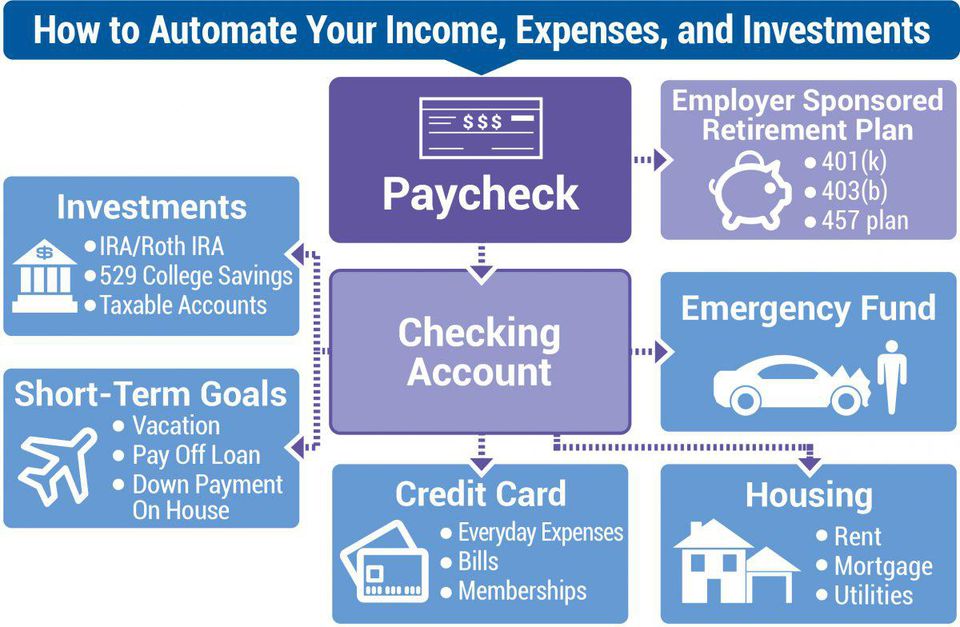This post may contain affiliate links. We may receive compensation when you click on links to those products at no additional cost to you. Read our full disclosure here.
What is the foundation for every successful financial plan? Making a budget and staying on top of it.
Before you embark on any fancy financial plan or strategy, you need to first clarify what your money is doing and where your money is going. A budget will essentially do that and help guide your next steps in what to do to reach your financial goals and objectives. Learn more about what a budget is in this Ultimate Guide to Budgeting article!
This guide will show you 5 easy steps to make a budget, stick to it, and stay on top of your finances. A few disclaimers about budgeting:
- There is no one-size fit all kind of budget. This is why there are tons of budgeting apps and spreadsheets out there that vary in method and style. Read more on the different types of budgeting systems here.
- Budgeting requires discipline to see results.
- There is always grace if you skew away from your plan. Being flexible and adjusting your budget is an art that takes time and consistency to master.
Now, let’s jump right in!
1. Track Your Income
- Figure out your monthly take-home pay from your job. This is the amount that hits your bank account after taxes.
- Include any other income from your side hustles, freelance work, alimony, stock dividends, investments, etc.
- Add the amount from steps 1 & 2 to find your Total Monthly Income.
2. Track Your Expenses
There are two main types of expenses you need to know for your budget, Fixed and Variable.
Note: It may be helpful to first categorize all your transactions according to their category first so that you are viewing your expenses in a clearer sense.
Fixed Expenses
Fixed expenses are the monthly bills that are fixed and constant.
- First, take a look at your bank statements and write down your fixed monthly bills like rent/mortgage, insurance, student loans, etc.
- Next, account for the fixed expenses you pay quarterly, semi-annually, or annually. Convert these to a monthly amount to be included in your budget. Eg. If your gym membership costs $120 annually, divide that by 12 months to get $10 a month.
- Since you will not be actually paying anything until it’s due, place the budgeted monthly amount into a sinking fund (pretty much another high-yield saving account) to prep for the bill and ensure that you can pay it when it’s due.
- This way, when the expense is due, you can use the funds from the sinking fund that is already accounted for and won’t throw your budget off track.
Variable Expenses
Variable expenses are the monthly expenses that are flexible and can vary from month to month. These are often discretionary expenses or non-essentials. Some examples of variable expenses are:
- Eating out
- Clothing
- Shopping
- Coffee
- Groceries
- Movies
- Gifts
3. Compare Your Monthly Income and Expenses
Next, compare your total monthly income and total monthly expenses (fixed and variable).
- If your income > expenses, good job!
- The extra money can be used towards saving, investing, or any financial goals you have.
- If your expenses > income, it’s not the end of the world, but you’ll have to adjust by either increasing your income or reducing your expenses.
- Adjust your budget by cutting down expenses until your income > expenses. This is where you look at your fixed and variable expenses and identify what is essential and non-essential. Then, you can start to cut any non-essential and variable expenses to decrease your overall expenses. However, if the deficit is too big and cutting small expenses like gym memberships and food is not enough, consider bigger changes that can reduce your monthly expenses significantly. For example:
- Refinancing your house at a lower interest rate
- Renting a cheaper place
- Performing a balance transfer on high-interest credit cards
- Making more money
4. Automate Your Budget
Once you have identified your expenses and potential discretionary income, automate your budget as much as possible to minimize major fluctuations. This will also help ensure that every dollar is defined without you constantly trying to manually move money around (it can get really stressful). Here are some ideas on how to automate your money:
- Pay yourself first by automating your savings.
- Turn on Autopay for fixed bills and expenses.
- Automate your investments into tax-advantaged accounts.
If you have any financial goals that you want to achieve, it is advisable to put any leftovers from your budget toward saving for that goal too. For example, if you want to start saving and investing, automate it! See the picture below for a clearer picture of what that’ll look like.

5. Track and Monitor Your Budget
Now that you have a budget in place, congrats! Your next step is to track and monitor your budget. The most important key to this step is to be consistent and flexible. Life is full of surprises and can throw off your budget in some months, but as long as you are monitoring it and making adjustments accordingly, you can stay on top of it and be better prepared.
Here are some tips to help you track and monitor your budget better:
- Determine the categories you want to track. For example: housing, utilities, pet, food, shopping, etc.
- Use budgeting apps like Mint.com or Personal Capital to track your budget efficiently. You’ll just need to link your bank accounts and categorize the transactions each month for a simple budget.
- If you’re old school and would like more control over your budget, you can use a spreadsheet to make a budget. This would be much more tedious and requires consistency and discipline to input the numbers manually.
- If cash represents more than 5% of your budget, start collecting receipts and input them into your budgeting tool/software.
Summary
Creating a budget is an essential first step in planning your finances. Getting this step right will allow you to plan how you want to use your money and account for your financial goals and objectives. Although the setup stages may require some legwork, an automated budget works wonders and can save you so much time and keep you stress-free! Remember to pay yourself first, and most importantly, have fun with it while you stay on top of your finances.
This post may contain affiliate links. We may receive compensation when you click on links to those products at no additional cost to you. Read our full disclosure here.






